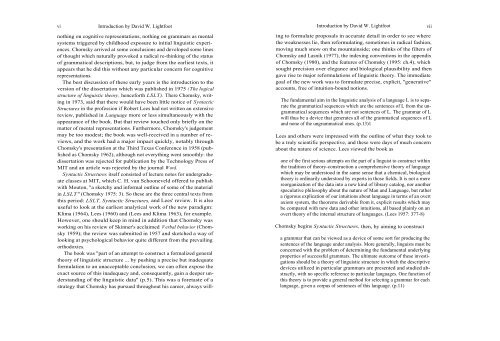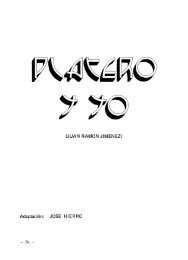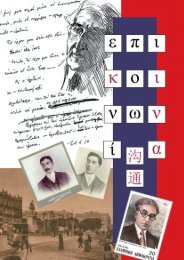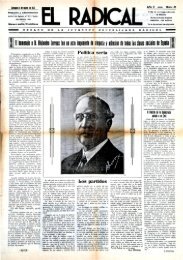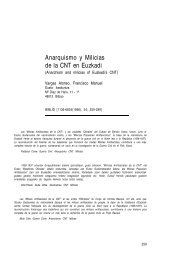Syntactic-Structure,Chomsky
Syntactic-Structure,Chomsky
Syntactic-Structure,Chomsky
Create successful ePaper yourself
Turn your PDF publications into a flip-book with our unique Google optimized e-Paper software.
vi Introduction by David W. Lightfoot Introduction by David W. Lightfoot vii<br />
nothing on cognitive representations, nothing on grammars as mental<br />
systems triggered by childhood exposure to initial linguistic experiences.<br />
<strong>Chomsky</strong> arrived at some conclusions and developed some lines<br />
of thought which naturally provoked a radical re-thinking of the status<br />
of grammatical descriptions, but, to judge from the earliest texts, it<br />
appears that he did this without any particular concern for cognitive<br />
representations.<br />
The best discussion of these early years is the introduction to the<br />
version of the dissertation which was published in 1975 ( The logical<br />
structure of linguistic theory, henceforth LSLT). There <strong>Chomsky</strong>, writing<br />
in 1973, said that there would have been little notice of <strong>Syntactic</strong><br />
<strong>Structure</strong>s in the profession if Robert Lees had not written an extensive<br />
review, published in Language more or less simultaneously with the<br />
appearance of the book. But that review touched only briefly on the<br />
matter of mental representations. Furthermore, <strong>Chomsky</strong>'s judgement<br />
may be too modest; the book was well-received in a number of reviews,<br />
and the work had a major impact quickly, notably through<br />
<strong>Chomsky</strong>'s presentation at the Third Texas Conference in 1958 (published<br />
as <strong>Chomsky</strong> 1962), although not everything went smoothly: the<br />
dissertation was rejected for publication by the Technology Press of<br />
MIT and an article was rejected by the journal Word.<br />
<strong>Syntactic</strong> <strong>Structure</strong>s itself consisted of lecture notes for undergraduate<br />
classes at MIT, which C. H. van Schooneveld offered to publish<br />
with Mouton, "a sketchy and informal outline of some of the material<br />
in LSLT" (<strong>Chomsky</strong> 1975: 3). So these are the three central texts from<br />
this period: LSLT, <strong>Syntactic</strong> <strong>Structure</strong>s, and Lees' review. It is also<br />
useful to look at the earliest analytical work of the new paradigm:<br />
Klima (1964), Lees (1960) and (Lees and Klima 1963), for example.<br />
However, one should keep in mind in addition that <strong>Chomsky</strong> was<br />
working on his review of Skinner's acclaimed Verbal behavior (<strong>Chomsky</strong><br />
1959); the review was submitted in 1957 and sketched a way of<br />
looking at psychological behavior quite different from the prevailing<br />
orthodoxies.<br />
The book was "part of an attempt to construct a formalized general<br />
theory of linguistic structure ... by pushing a precise but inadequate<br />
formulation to an unacceptable conclusion, we can often expose the<br />
exact source of this inadequacy and, consequently, gain a deeper understanding<br />
of the linguistic data" (p.5). This was a foretaste of a<br />
strategy that <strong>Chomsky</strong> has pursued throughout his career, always willing<br />
to formulate proposals in accurate detail in order to see where<br />
the weaknesses lie, then reformulating, sometimes in radical fashion,<br />
moving much snow on the mountainside; one thinks of the filters of<br />
<strong>Chomsky</strong> and Lasnik (1977), the indexing conventions in the appendix<br />
of <strong>Chomsky</strong> (1980), and the features of <strong>Chomsky</strong> (1995: ch.4), which<br />
sought precision over elegance and biological plausibility and then<br />
gave rise to major reformulations of linguistic theory. The immediate<br />
goal of the new work was to formulate precise, explicit, "generative"<br />
accounts, free of intuition-bound notions.<br />
The fundamental aim in the linguistic analysis of a language L is to separate<br />
the grammatical sequences which are the sentences of L from the ungrammatical<br />
sequences which are not sentences of L. The grammar of L<br />
will thus be a device that generates all of the grammatical sequences of L<br />
and none of the ungrammatical ones. (p.13)1<br />
Lees and others were impressed with the outline of what they took to<br />
be a truly scientific perspective, and these were days of much concern<br />
about the nature of science. Lees viewed the book as<br />
one of the first serious attempts on the part of a linguist to construct within<br />
the tradition of theory-construction a comprehensive theory of language<br />
which may be understood in the same sense that a chemical, biological<br />
theory is ordinarily understood by experts in those fields. It is not a mere<br />
reorganization of the data into a new kind of library catalog, nor another<br />
speculative philosophy about the nature of Man and Language, but rather<br />
a rigorous explication of our intuitions about language in terms of an overt<br />
axiom system, the theorems derivable from it, explicit results which may<br />
be compared with new data and other intuitions, all based plainly on an<br />
overt theory of the internal structure of languages. (Lees 1957: 377-8)<br />
<strong>Chomsky</strong> begins <strong>Syntactic</strong> <strong>Structure</strong>s, then, by aiming to construct<br />
a grammar that can be viewed as a device of some sort for producing the<br />
sentences of the language under analysis. More generally, linguists must be<br />
concerned with the problem of determining the fundamental underlying<br />
properties of successful grammars. The ultimate outcome of these investigations<br />
should be a theory of linguistic structure in which the descriptive<br />
devices utilized in particular grammars are presented and studied abstractly,<br />
with no specific reference to particular languages. One function of<br />
this theory is to provide a general method for selecting a grammar for each<br />
language, given a corpus of sentences of this language. (p.11)


